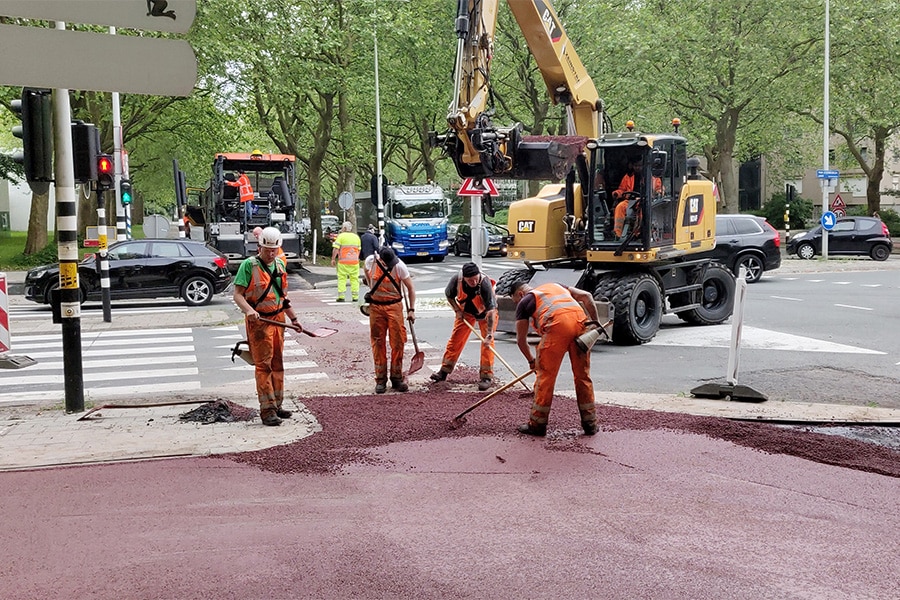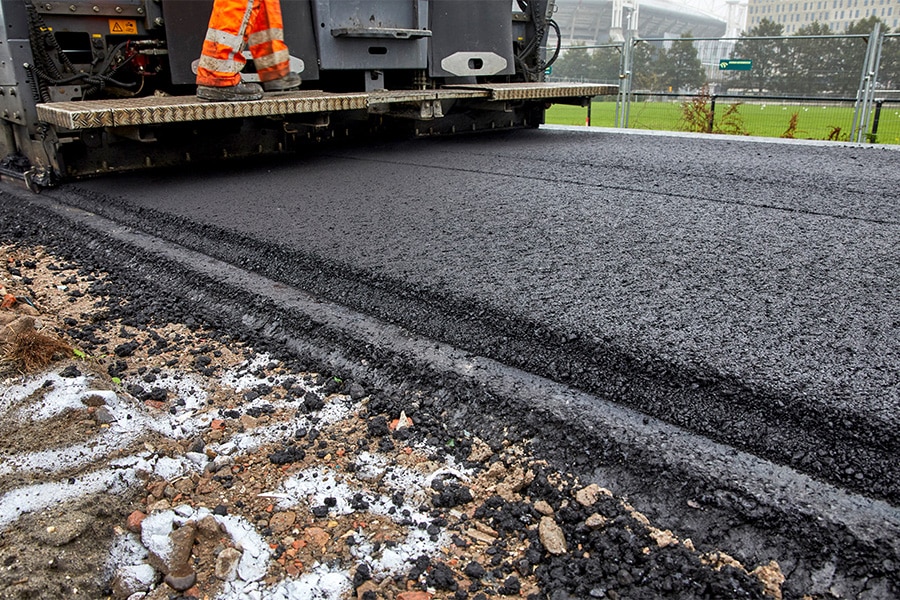
'We have changed the map of the Netherlands'
First, the summer bed of the Lower IJssel was lowered. Over a length of seven kilometers - between the Molenbrug and the Eilandbrug - the river was deepened. Then the new IJssel bypass was constructed south of Kampen with over three hundred hectares of nature reserve and attractive hiking and biking trails. And finally, the new channel (Reevediep) for recreational boating in the bypass between the IJssel and Drontermeer was realized.
In total, Boskalis was active in the IJssel Delta for more than four years, with dredging and large earthmoving as its main activities. For a year, cutter suction dredger De Seine was in the IJssel to deepen it by about two meters. Given the enormity of the work, even sub-tasks sometimes took months. "For example, it took a year to set up our work site and deepen the IJssel," says Bert van Bavel, Boskalis project manager. "The peat soil and the ecology in the area gave us many additional challenges."

Dredge transport from the IJssel to the Reevediep
The deepening of the IJssel was done according to a well thought out plan. Ahead sailed "The Seine. "This is a smaller cutter suction dredger with a skilled crew," says Van Bavel. "The 'cutters' - also called 'cutter suction dredgers' - can powerfully cut and dredge in extremely hard soil at the same time, and that to a depth of 35 meters." Through a thick hose, the reclaimed sand was pumped from De Seine to bucket loader De Olst, where it was dumped into split bins. The split barges then sailed to an old sand mining lake in the Onderdijkse Waard and unloaded the sand there. A second dredger - the "Ceres" - pumped the sand through to the Reevediep, where it was incorporated into the dikes.
Warn of risky situations
The combination of cutter suction dredger, discharge hose and bucket loader - right in the middle of the IJssel River - was an object of size that also posed a risk on the water. Vessel traffic control was deployed for this purpose. Both commercial and recreational shipping were warned. Van Bavel: "We were able to inform commercial shipping easily by VHF radio. We warned recreational skippers with flyers and warning signs. They also often wanted explanations about our work. That actually always resulted in pleasant conversations."
Dikes with a core of sand
For the second major challenge - the excavation of the Reevediep - water management in this area first had to be modified. This was done under ecological supervision. "For example, a new habitat was first established for the water shrew before we were allowed to use part of its old habitat for the construction of work roads," Van Bavel explains. Then the five polders in the work area were disconnected in terms of water system. "To do this, we first pulled the polders together into a contiguous area. Then the area was ready to excavate the Reevediep and provide it with floodplains and protective dikes on both sides. The sand and clay released from the Reevediep were incorporated into the dikes. The peat was sold as potting soil. This created a 'closed soil balance'; all the released materials were reused sustainably, at short distances and in high quality. This gave the dikes a solid sand core. The outer sides of the dikes were built up with clay."

A pre-load profile
To make sure the dikes met the requirements for residual settlement, Boskalis first constructed the dikes according to a pre-load profile. "For twelve months we heavily loaded the dikes with an over height of clay or sand. During that period we used pocket beacons to monitor the subsurface settlement. Only when the measurements showed that the ground was no longer settling did we finish the dikes with clay." After building the dikes, Boskalis made preparations along and on the dikes for bike paths and grass concrete paths.
Immense quantities
"Day-in-day-out and even year-in-year-out we moved millions of cubic meters of raw materials this way," Van Bavel says. "From the river IJssel we dredged 1.8 million and from the Reevediep another 2.5 million cubic meters of sand, peat and clay were excavated. To keep our promises, we did this at quite a high rate. We regularly reached a production of 50,000 cubic meters per week with the dry sets. Partly because of this, we really had to shift gears when we heard that an archaeological site had been found in the Reevediep."

Archaeological finds
This involved an area of about a hectare that could therefore not be excavated with Boskalis' huge buckets, but by hand and inch by inch. For Boskalis the moment to offer its services in a different way. "To carry out the excavations in dry soil, we created a construction pit of sheet piling for the archaeological team," Van Bavel explains. "This created a relatively dry building pit in which the archaeologists could quietly do their work. It yielded beautiful finds, including hearth pits and flints from the Middle Stone Age. That's 7,000 to 5,000 years before Christ."
Positive reactions
The final part of the project involved the Reeve lock complex. Here Boskalis, in collaboration with Van Hattum and Blankevoort, built a lock instead of a floodgate. "Initially, the environment was critical of the mega-project so right through the polder. But when our contractor and environmental manager kept contacting the environment throughout the project, the criticism turned into positive reactions. Visitors saw the creation of a beautiful natural area with unique recreational opportunities. In the process - thanks to the closed soil balance and the clever logistical plan - they hardly experienced any inconvenience from our work."
"They have been fantastic years," Van Bavel looks back. "Everything has come along. Wet and dry earth moving, civil work and road construction and the construction of two complete locks. And best of all: we changed the map of the Netherlands. If you zoom in on Google Earth now, you can see that hundreds of acres have been redesigned."



